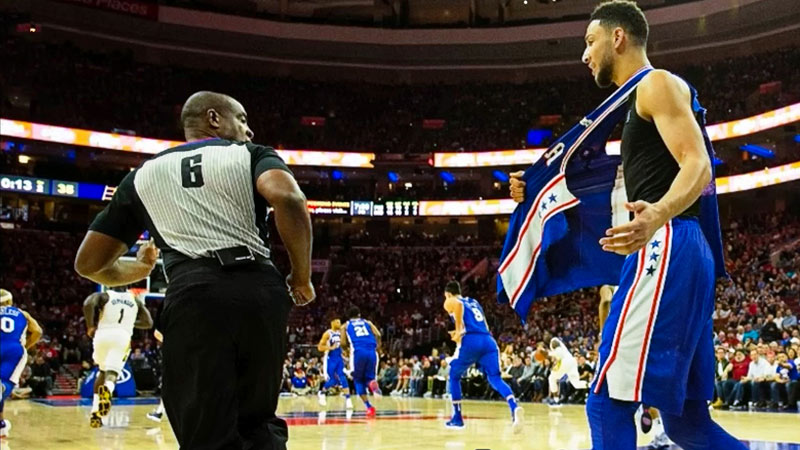Basketball is an exhilarating sport that demands skill, strategy, and sportsmanship. However, amidst the intense competition, there are instances when players violate the rules, leading to fouls.
One type of foul that is commonly seen in basketball is the technical foul. Though it is a very significant foul type in basketball, a lot of us don’t have a proper idea about it.
In this article, we will delve into the intricacies of technical fouls, exploring their various types, etc. So, if you want to learn exactly what this technical foul join us in this discussion and learn everything you need about this fact.
What Are Technical Fouls in Basketball?
Technical fouls in basketball are penalties assessed against players, coaches, or teams for various rule violations or unsportsmanlike conduct during a game.
They are distinct from personal fouls or flagrant fouls and can result from actions such as excessive timeouts, delay of game, unsportsmanlike behavior, fighting, or tampering with basketball equipment.
Technical fouls can impact the flow of the game, result in financial fines, and potentially lead to ejections or suspensions for players or coaches.
Types of Technical Fouls in Basketball in the NBA
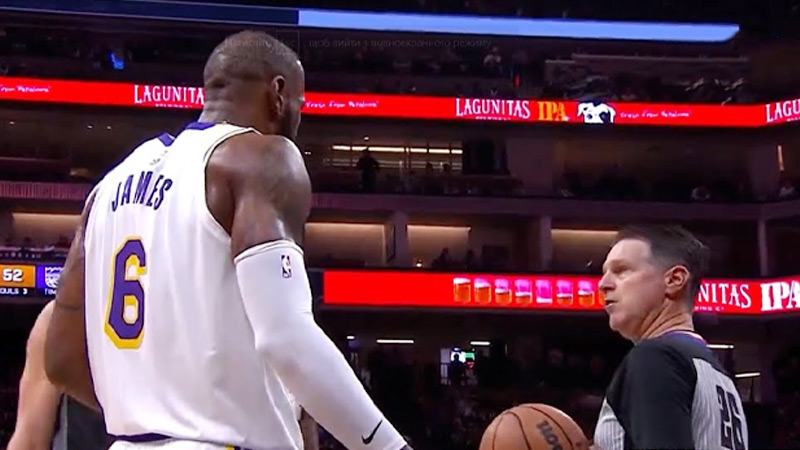
Technical fouls play a significant role in maintaining the integrity and fair play of basketball games. They serve as penalties for various rule violations and unsportsmanlike conduct.
In the National Basketball Association (NBA), there are several types of technical fouls that can be assessed against players, coaches, or teams. Let’s explore these different types in more detail:
Excessive Timeouts
Timeouts are crucial breaks during a game that allows teams to regroup, strategize, and make necessary adjustments. However, teams are limited to a specific number of timeouts per game.
If a team exceeds the designated number of timeouts or takes a timeout when they have none remaining, it results in a technical foul. This penalty discourages teams from exploiting timeouts excessively and helps maintain the flow of the game.
Delay of Game
The smooth and uninterrupted flow of a basketball game is essential for its excitement and fairness. Deliberate actions that disrupt this flow, such as kicking the ball away to prevent a quick inbound or delaying the process of putting the ball into play, result in a delay of a game technical foul.
This penalty encourages players to respect the pace and rhythm of the game, preventing unnecessary interruptions.
Number of Players
Basketball is a game played with teams consisting of five players on the court. If a team has more than the allowed number of players on the court at any given time or fails to have the minimum number of players required to play, it results in a technical foul.
This rule emphasizes the importance of adhering to the standard team composition and ensures fair competition between teams.
Unsportsmanlike Conduct
Sportsmanship lies at the heart of any athletic competition, and basketball is no exception. Any behavior that goes against the principles of fair play and respect for opponents can result in an unsportsmanlike conduct technical foul.
This includes actions such as taunting opponents, using offensive language, making obscene gestures, or engaging in disrespectful behavior towards officials or other players. The penalty serves as a deterrent, promoting a positive and respectful atmosphere within the game.
Fighting Fouls
Physical altercations have no place in basketball and are strictly prohibited. Engaging in fights, throwing punches, or instigating altercations on the court are serious offenses that result in technical fouls and potential ejections from the game.
This rule is crucial in maintaining the safety of the players, preserving the integrity of the game, and preventing unnecessary confrontations that can escalate into more significant incidents.
Basket Ring, Backboard, or Support
The equipment used in basketball, including the basket ring, backboard, and support structures, must be treated with respect and not tampered with.
Actions such as excessive hanging on the rim after a dunk, slapping the backboard, or intentionally tampering with any of the basketball equipment are considered technical fouls.
These penalties ensure the proper and safe use of equipment, preventing potential damage or dangerous situations during the game.
By enforcing these various types of technical fouls, the NBA maintains a high standard of sportsmanship, fair play, and adherence to the rules of the game.
It ensures that players, coaches, and teams are held accountable for their actions, promoting an environment of integrity and competitive excellence.
NBA Technical Foul Fines
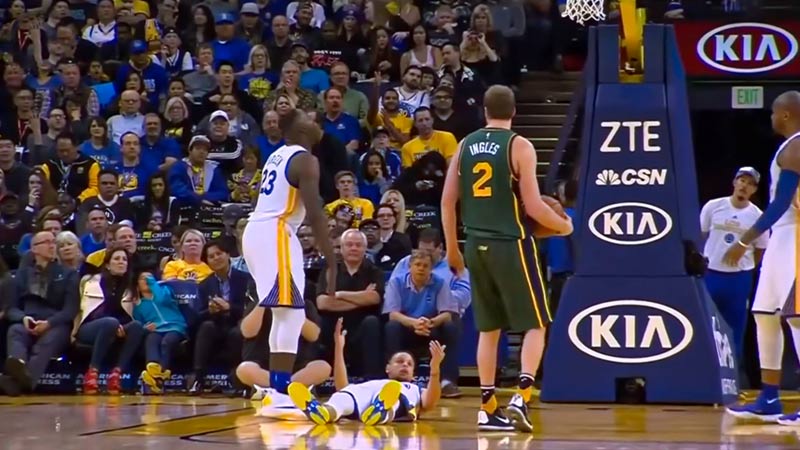
Technical fouls in the NBA not only impact the flow of the game but also have financial consequences for the players involved. The league imposes fines on players for accumulating technical fouls throughout the season.
These fines serve as a deterrent against unsportsmanlike conduct and violations of the game’s rules, promoting fair play and sportsmanship.
When a player commits a technical foul, they are not only penalized by the game officials but also face financial repercussions. The fines imposed by the NBA escalate with each subsequent technical foul, with the amount increasing for repeated offenses.
The league aims to discourage players from engaging in behaviors that disrupt the game or go against the principles of fair play.
The initial fines for technical fouls in the NBA typically range from a few hundred dollars to around a thousand dollars. These fines serve as a reminder to players to maintain their composure and adhere to the rules of the game.
However, if a player continues to accumulate technical fouls throughout the season, the fines can increase significantly. It is not uncommon for players to face fines of several thousand dollars for repeated or excessive technical fouls.
Apart from the financial fines, players who accumulate a certain number of technical fouls within a season may also face suspensions.
The NBA has established thresholds for technical fouls, and if a player exceeds those thresholds, they may be suspended for a game or multiple games.
These suspensions serve as a more severe consequence for players who consistently engage in unsportsmanlike behavior or fail to adhere to the rules of the game.
The financial impact of technical fouls goes beyond just the fines imposed by the league. Players who receive technical fouls may also lose out on potential bonuses or incentives tied to their performance.
Many player contracts include clauses that reward players for maintaining good behavior and avoiding excessive technical fouls.
Therefore, in addition to the immediate financial hit from fines, players may also experience long-term financial implications if their actions result in the loss of performance-based bonuses.
Technical Foul vs. Flagrant Foul
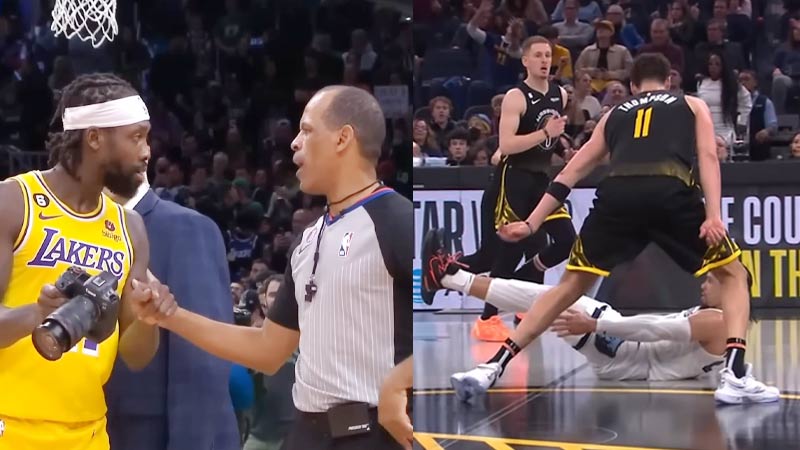
In the game of basketball, fouls are a common occurrence and play a significant role in maintaining fair play and player safety. Among the various types of fouls, two that often generate discussion and debate are technical fouls and flagrant fouls.
While both result in penalties, it’s important to understand their distinctions to grasp their implications for the game and the players involved.
Technical Fouls
A technical foul is typically assessed for unsportsmanlike conduct or violations of the game’s rules that don’t involve excessive physical contact. These fouls are usually the result of actions or behavior that disrupt the game or show a lack of respect towards officials, opponents, or the sport itself.
Examples of technical fouls include excessive arguing with referees, using offensive language, taunting opponents, or displaying unsportsmanlike gestures.
When a technical foul is called, the opposing team is typically awarded one or two free throws, depending on the league or level of play. The team that committed the foul also forfeits possession of the ball.
Furthermore, technical fouls may result in fines or suspensions for players, particularly if they accumulate multiple technical fouls over a season.
Flagrant Fouls
Flagrant fouls, on the other hand, involve excessive and unnecessary physical contact that can pose a danger to the opposing player. These fouls are typically characterized by actions such as striking, hitting, or making deliberate contact with an opponent above the shoulders or using excessive force.
Flagrant fouls can also include unsportsmanlike actions that go beyond the bounds of fair play, such as intentionally tripping or undercutting an opponent.
Due to their severity, flagrant fouls are subject to more severe consequences than technical fouls. The penalty for a flagrant foul typically involves free throws for the offended team and additional penalties, such as ejections or player suspensions.
The specific consequences vary depending on the league or governing body, with some flagrant fouls resulting in an automatic ejection from the game and potential further disciplinary actions after a review by league officials.
Differentiating Technical Fouls and Flagrant Fouls
The key distinction between technical fouls and flagrant fouls lies in the nature of the infraction and the level of physicality involved.
Technical fouls primarily focus on violations of conduct and rules that don’t involve excessive contact, while flagrant fouls encompass actions that display an intentional or reckless disregard for an opponent’s safety.
It’s important to note that officials have the authority to assess technical fouls and flagrant fouls based on their judgment of the situation. In some cases, an action may initially be called a technical foul but could be upgraded to a flagrant foul upon further review or consultation with other officials.
Technical Fouls in College Basketball Rules
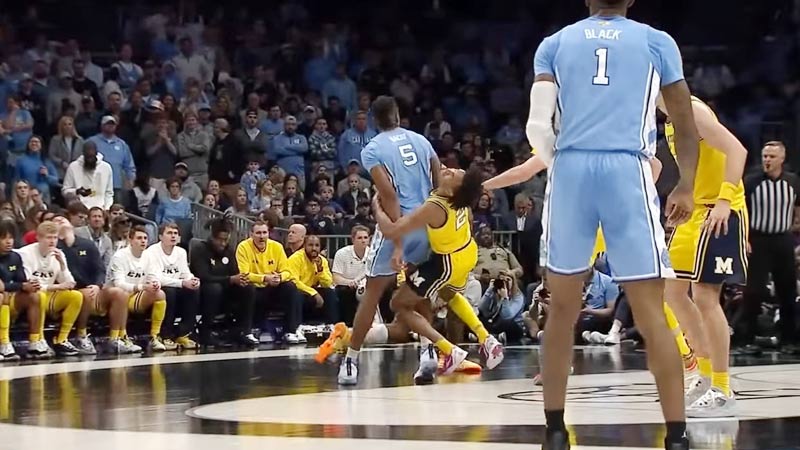
College basketball, as one of the most popular and widely followed sports in the United States, has its own set of rules and regulations regarding technical fouls. While these rules are generally similar to those in the NBA, there are certain variations that distinguish the college game.
Consequences of Technical Fouls in College Basketball
The consequences of technical fouls in college basketball are essential for players, coaches, and fans alike.
Opposing Team Awarded Free Throws
In college basketball, when a technical foul is assessed against a player, coach, or team, the opposing team is typically awarded free throws.
The number of free throws awarded can vary depending on the specific circumstances surrounding the technical foul.
It is common for the opposing team to be given two free throws, with the opportunity to score points while the clock is stopped.
Ejections for Repeated Offenses
Similar to the NBA, college basketball imposes a threshold for technical fouls. If a player or coach accumulates a certain number of technical fouls within a game or throughout the season, they may be ejected from the game.
This serves as a disciplinary measure to deter repeated unsportsmanlike conduct and maintain the integrity of the game.
Technical Fouls on Coaches
In college basketball, coaches can also receive technical fouls for various infractions. These can include excessive arguing with officials, leaving the designated coach’s box during the game, or any other behavior that violates the rules or exhibits poor sportsmanship.
Coaches play a vital role in guiding their teams, and it is crucial for them to maintain composure and abide by the rules of the game.
Differences between College Basketball and NBA Technical Fouls
While the fundamental concept of technical fouls remains consistent between college basketball and the NBA, there are a few notable differences:
Foul Accumulation
In the NBA, players face potential suspensions if they accumulate a certain number of technical fouls throughout the regular season.
However, in college basketball, there is typically no specific suspension threshold based on the number of technical fouls. Instead, repeated offenses may result in ejections from individual games.
Severity of Penalties
Technical fouls in college basketball generally result in the opposing team being awarded free throws, whereas in the NBA, players are usually fined for each technical foul committed.
The financial aspect of technical fouls in college basketball is not as prevalent as it is in professional leagues.
Rule Variations
Although the overall concept of technical fouls is similar, there may be slight rule variations between college basketball and the NBA. These differences can pertain to the criteria for assessing technical fouls or the specific actions that lead to their enforcement.
It is essential for players, coaches, and officials to familiarize themselves with the specific rules and guidelines established by the respective college basketball governing bodies.
Technical Fouls in School Basketball Rules
At the school basketball level, technical fouls are governed by the rules established by the specific governing body, such as the National Federation of State High School Associations (NFHS) in the United States.
The NFHS rules outline the consequences for technical fouls, which can range from awarding free throws to the opposing team to ejections for players or coaches.
FAQs
Can technical fouls result in ejections from the game?
Yes, depending on the severity of the technical foul and the number of accumulated technical fouls, players or coaches can be ejected from the game.
Do technical fouls affect a player’s statistics?
Yes, technical fouls count as personal fouls for individual players, and they are included in their overall statistics for the game.
Can technical fouls be challenged or reviewed through video replay?
No, technical fouls are generally not subject to review or challenge through video replay. They are assessed and enforced by the game officials on the court.
How many technical fouls can a player receive before facing a suspension?
In the NBA, players receive an automatic one-game suspension if they accumulate 16 technical fouls during the regular season. The threshold may vary in different leagues or organizations.
Can technical fouls be rescinded or overturned?
In rare cases, technical fouls can be rescinded or overturned upon review by the league or basketball officials if it is determined that an error was made in assessing the foul.
Bottom Line
Technical fouls in basketball are penalties imposed on players or coaches for various rule violations, unsportsmanlike conduct, or disruptive actions. They not only impact the flow of the game but can also result in financial fines and potential ejections.
The different types of technical fouls and their consequences are crucial for players, coaches, and fans alike, as they promote a fair and respectful environment on and off the basketball court.
By upholding the principles of sportsmanship, players can showcase their skills while maintaining the integrity of the game. Thank you.

